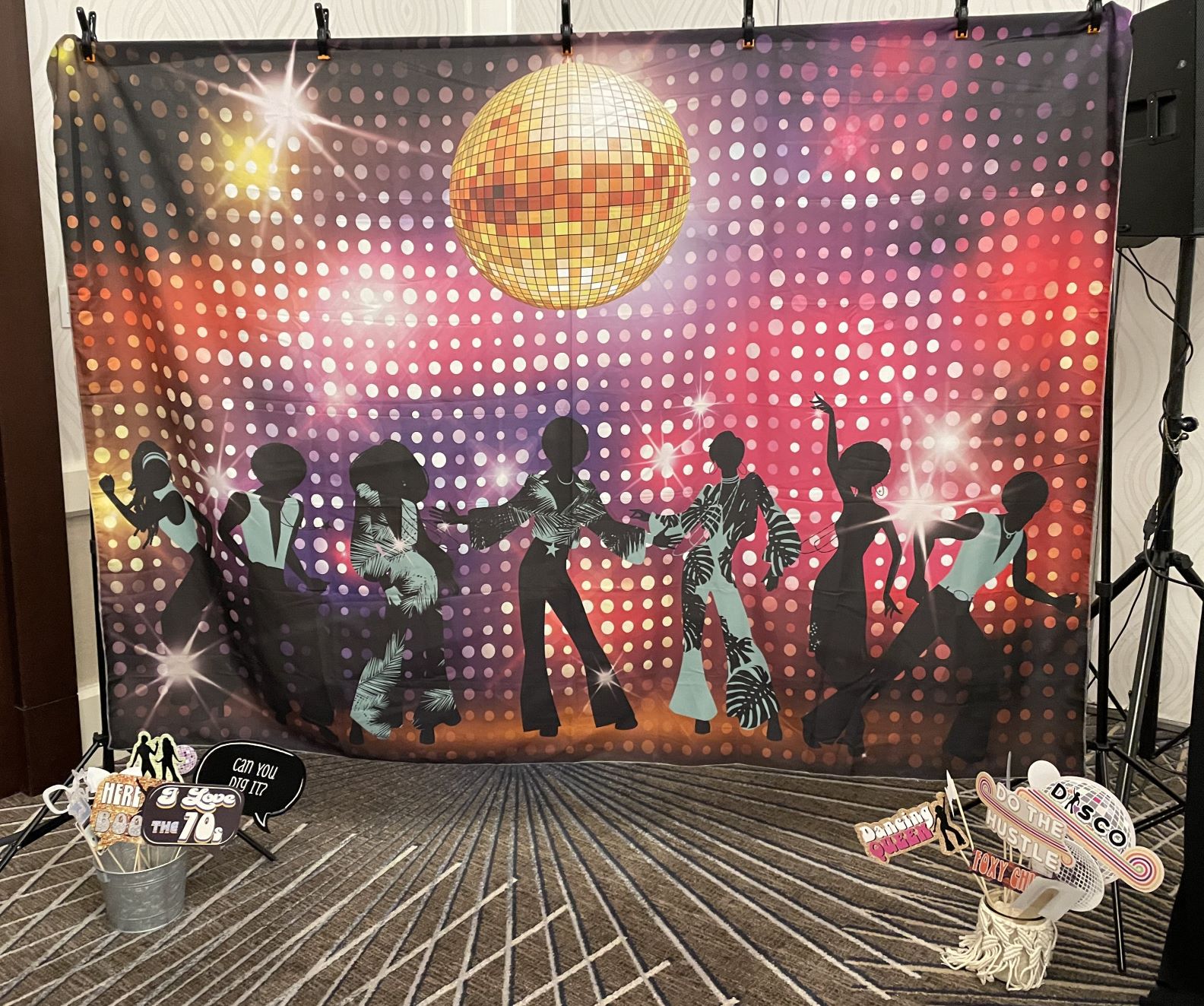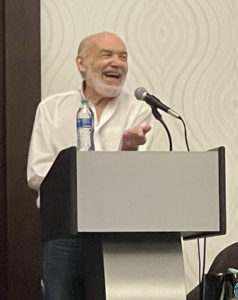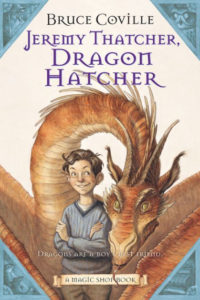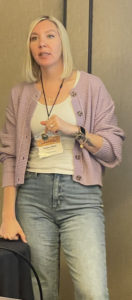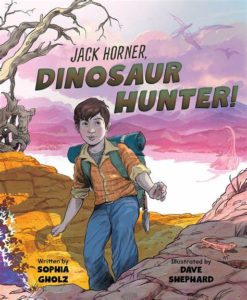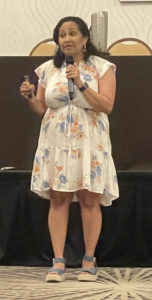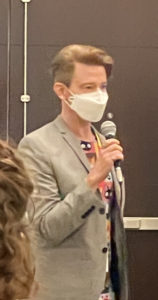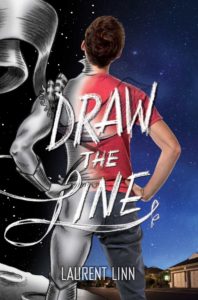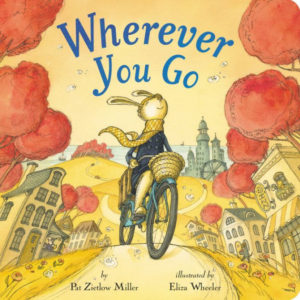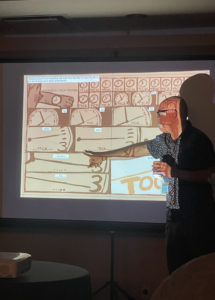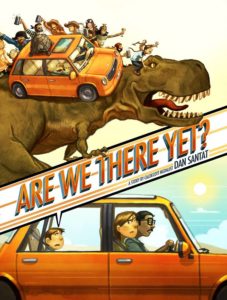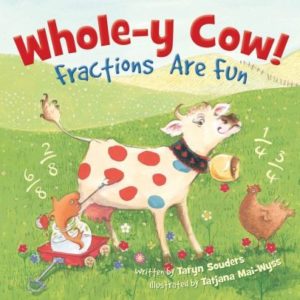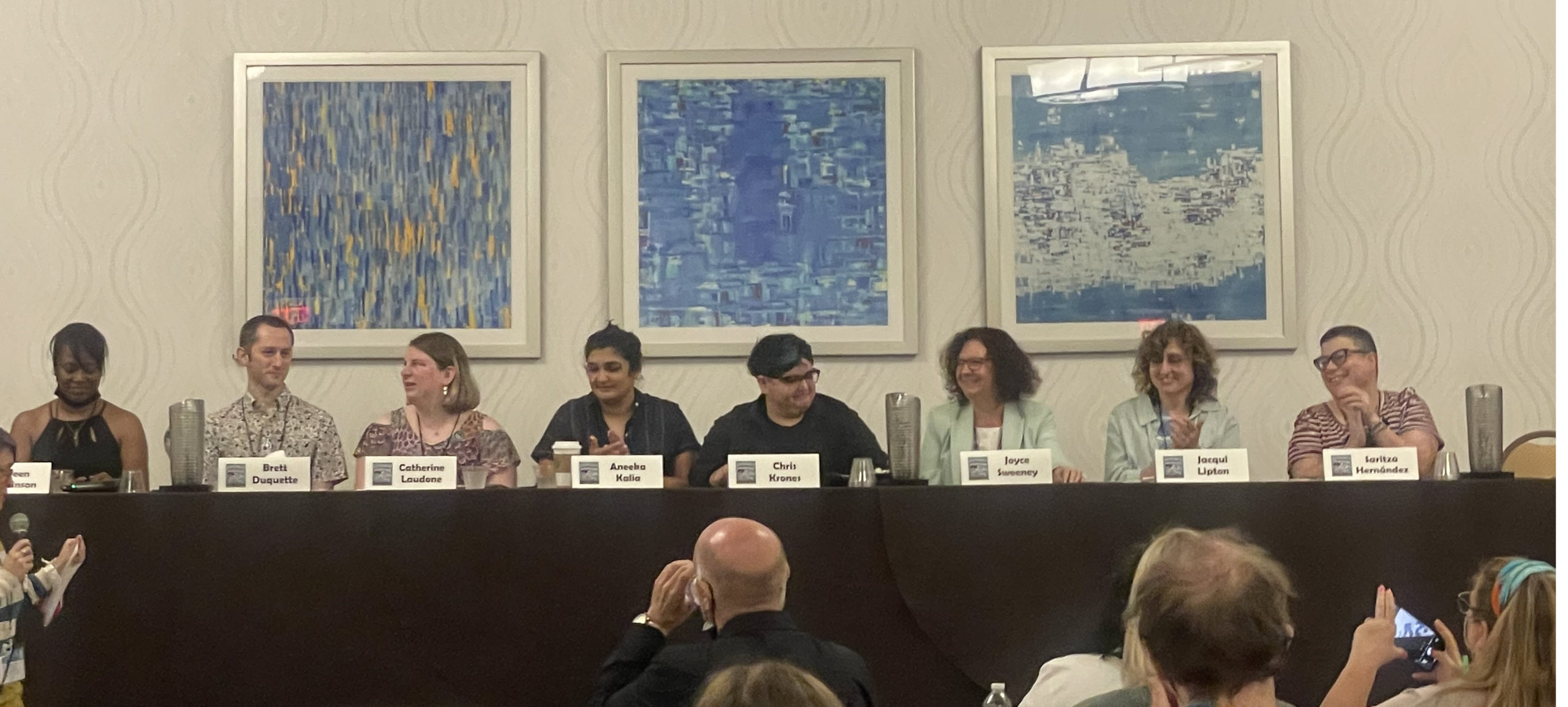 This month’s Insider Interview is with Joyce Sweeney! Here in Florida, Joyce is a legendary figure who ran one of the most successful kidlit writing coach businesses—dozens of Joyce’s clients found publication thanks to their help and guidance. Joyce is a well-published author on their own, too, having written more than a dozen novels for young adults.
This month’s Insider Interview is with Joyce Sweeney! Here in Florida, Joyce is a legendary figure who ran one of the most successful kidlit writing coach businesses—dozens of Joyce’s clients found publication thanks to their help and guidance. Joyce is a well-published author on their own, too, having written more than a dozen novels for young adults.
A few years ago, Joyce became a literary agent for The Seymour Agency, and that’s where they’re dealing with picture books on a more regular basis.
Let’s hear from Joyce directly about this new career!
RVC: You’re clearly an animal lover–I saw your recent FB post where you talk about your dear friend at Flamingo Gardens…who happens to be a rescue crow.
JS: My husband and I are both dedicated animal lovers and rescuers. Most of our pets have been rescues and when we get free time, like last Saturday, we head to the wildlife areas immediately. I think I have done so well in nonfiction picture books because I have a great eye for nature and wildlife stories.
RVC: We’ll circle back on animals in a moment. In the meantime, tell me about your relationship with books as a kid.
JS: My mother was a book lover, who was actually shamed by her parents for “reading too much” and not going outside. So, I grew up showered in Little Golden Books and being read to all the time. Picture books transported me because story and art are possibly my two favorite things. One of my favorite “picture books” as a preschooler was a book of Chinese poetry for adults with beautiful watercolors. I pored over that book.
RVC: What specifically appealed to Young You about the art?
JS: It was unlike anything else I had seen. Watercolor art and scenes of Asian life. It was so beautiful!
RVC: Let’s jump ahead a bit. What future did you imagine for yourself when you attended Wright State University?
JS: I was planning to be the next JD Salinger. I got closer than I thought I would!
RVC: I assume you’re saying that because you had your own books published and not because of other Salingeresque things (being a hermit, refusing to be edited, suing your biographer, offering a residency for a cartoonist at your house, etc.).
JS: Yes, I was talking about his impact on teens through his writing.
RVC: Roger that! Please share how your five-week classes at the Florida Center for the Book turned into the robust writing coach business that you did for so many years.
JS: I was in a rhythm of teaching regular classes at the library and there would be repeat students. I’d say, “How has your writing been going?” And they’d say, “It was great during the class, but then I stopped.” So, I realized writers needed a “never-ending class” and I started one. People started getting published and the rest is Magic Bean history.
RVC: For those who don’t know, what’s the Magic Bean reference?
JS: When I started teaching ongoing workshops, and people started getting published, we decided there should be some kind of prize given out. I had a friend who had just gone to Costa Rica and she discovered the beautiful seeds of the Guanacaste tree. They seemed perfect. So, anyone I have helped, when they are traditionally published, they get one.
I think it was Sherri Winston who coined “magic beans.”
RVC: What’s one of your favorite success stories from your coaching days?
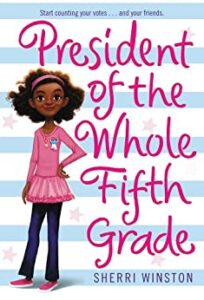 JS: Can’t choose! During the first two years of that class, I saw the launch of Alexandra Flinn, Dorian Cirrone, Noreen Wald (Nora Charles), Gloria Rothstein, Sherri Winston, and a slew of others. It was thrilling.
JS: Can’t choose! During the first two years of that class, I saw the launch of Alexandra Flinn, Dorian Cirrone, Noreen Wald (Nora Charles), Gloria Rothstein, Sherri Winston, and a slew of others. It was thrilling.
RVC: It sure sounds like it! Now, one of the things you’re famous for is being a true coach—caring and supporting your clients well beyond anything story related. What’s your secret?
JS: I care. I mean I really do. I know how they feel. I’ve lived everything, good and bad, that they go through. A writer starts talking to me, I want to put everything down and listen. And I can usually find a hopeful direction for them to take.
RVC: From my perspective, it looked like business was booming. Why make the switch to agenting?
JS: I really love change and I really love a challenge. This was a big one and it came out of left field because it was offered to me rather than something I went after. Nicole Resciniti [President of The Seymour Agency] surprised the heck out of me during a lunch meeting by just springing it on me. But she pointed out, “You’ve been doing this job for years. This just takes it to the next level.”
And she was right.
RVC: Why is The Seymour Agency a great fit for you?
JS: I think because of the tone Nicole sets. We have that same urge to mentor, nurture, make dreams come true. All the agents at Seymour support and help each other to an unbelievable extent. It’s a loving, supportive atmosphere. I’ve never been at another agency, but I think our vibe is quite rare.
RVC: Describe a typical workday as an agent.
JS: That’s the beauty of it–there’s no such thing. This morning, I have to sign off on a contract for a client, execute a contract with a new client, read several new picture books some clients want me to see, send out a middle grade on submission, and have a phone meeting with one of my favorite clients. There will be about twenty surprises that come in on top of that. The days literally fly by.
RVC: What is the most common misconception about agenting?
JS: That agents don’t care or take clients’ hopes and fears lightly. We think about all of them all the time.
RVC: What’s the story of—and behind—your first picture book sale?
JS: My lovely friend and client Mindy Weiss runs a little showcase on Twitter called Picture Book Party. My first year as an agent, I found several manuscripts I loved, including a lyrical PB called Peaches by Gabriele Davis. I remember telling my husband about it and saying I wished I could have Peaches but that writer is too good for a beginning agent. But we had a phone interview and Gabriele and I really clicked and she picked me!
RVC: Congrats on that!
JS: She is a dream client. She works hard and participates in the process well. A few months after we went out, we had two R&R’s [revise and resubmits] and from that came her sale to Abrams.
RVC: When might we see Peaches?
JS: It comes out next spring, and this book will always be special to me.
RVC: How do you collaborate with your clients to develop their picture book projects before submitting them to publishers?
JS: It’s an ongoing process. It’s not just how to edit or tweak what they have, but as they submit and start to get industry feedback, we have to collaborate on how to brand them, how to develop their uniqueness into something editors will clamor for. It takes a lot of time and thought to position a client to make a sale.
RVC: How do you balance the commercial appeal of a picture book with its artistic and literary merits?
JS: I think in kidlit, artistic and literary merit is PART of commercial appeal, because a lot of sales are awards driven or based on educational value, etc. The best projects always have both: literary and artistic merit and commercial hooks.
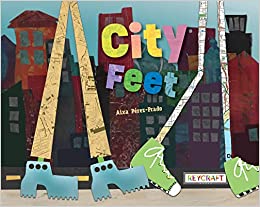 For example, there’s City Feet by Aixa Perez-Prado, which is my first client book to come out just this past January. It’s so fun and kid friendly because of the rhythm and fun of the text and the kooky, funky shoes, but it also has Aixa’s beautiful, mixed-media art, the multilingual text, and most fun for me, maps of cities around the world embedded in the collages.
For example, there’s City Feet by Aixa Perez-Prado, which is my first client book to come out just this past January. It’s so fun and kid friendly because of the rhythm and fun of the text and the kooky, funky shoes, but it also has Aixa’s beautiful, mixed-media art, the multilingual text, and most fun for me, maps of cities around the world embedded in the collages.
RVC: Share an example of a picture book project that presented unique challenges or learning experiences.
JS: I had an author illustrator who kept getting the note that they loved her story but not her illustrations. That’s hard for an artist to hear. But she did the bravest thing I ever saw. She took a year off to raise her game, studying every technique she could find. She was already a trained artist, but she pushed it further. I admire that kind of dedication so much. I believe she is on the brink of her first sale right now.
RVC: I sure hope so–it sounds as if she earned it. Let’s talk about the business side of things. How do you stay updated on the latest industry news, trends, and best practices to best serve your clients?
JS: We have regular agency meetings, trainings, and updates. I get a slew of industry newsletters every day and I learn a lot just from interactions with editors and listening closely to what they’re saying. I hold regular meetings with clients and big group meetings about twice a year and try to brief them on the “state of the industry.” Plus, we have a Facebook page where they all share info they are finding out.
RVC: What challenges do you see facing the picture book industry today, and how can authors and illustrators adapt to these changes?
JS: It’s a robust industry and I’m thankful for that. The challenges seem to come and go. COVID was a challenge, paper costs was a big problem, then general supply chain issues. What I am seeing now is some editor burnout, I think from surviving all the things I mentioned above.
RVC: I’m seeing some of that, too.
JS: The good thing is, kids want and need books and that never changes.
RVC: In addition to your novels, you’ve published a number of poetry chapbooks. How does your work as a poet inform how you work with picture book texts?
JS: Sometimes I can make a really good editorial suggestions, like “end the line on THAT word.” That knowledge comes from poetry. And I definitely know good lyricism when I read it.
RVC: Talk to me about those magical power lunches. How often do they happen? What goes on? Do you split dessert or does everyone get their own?
JS: The first rule at The Seymour Agency…the agent pays for everything. We are hosting and treating our clients and it’s a great, relaxed way to really talk in depth. I knew so many great local writers from Florida SCBWI and a lot of them became clients, so I can see them anytime. But some of my clients also travel and make regular pilgrimages, which I love.
It’s good to be Florida based. Everyone wants to come here.
RVC: Complete the sentence. Joyce Sweeney is an agent who…
JS: cares about your career and is responsive to your needs.
RVC: One last question for this part of the interview. What are some upcoming projects that you’re especially excited about?
JS: Barefoot Books is launching a series called OUR WORLD that takes a creative approach to showing different countries and cultures. I have two clients participating in that: Aixa Perez-Prado for Argentina and Ana Siqueira for Brazil.
RVC: Okay, Joyce…it’s time for the LIGHTNING ROUND! Zippy questions and zappy answers, please. Are you ready?
JS: I was born ready!
RVC: Magic beans, magic wands, or magic hats?
JS: I actually have all three. Doesn’t every agent?
RVC: Most underappreciated astrological sign?
JS: Scorpio (yes, I am one). But we always get the “murderer” meme. And we are really very loving, protective people.
RVC: Favorite cat joke/pun?
JS: An old woman was walking along the beach with her cat. She found a magic lamp and a genie appeared. He gave her three wishes. First, she wished to be young and beautiful. Granted. Then she wished to be rich. Granted. Third wish. She looked at her cat and said, “Turn him into a handsome young man.” Granted and the genie disappeared. The cat, now a handsome young man, stood before the now young beautiful, rich girl. And he said, “Aren’t you sorry you had me neutered?”
RVC: Favorite picture book that features an animal protagonist?
JS: Olivia!
R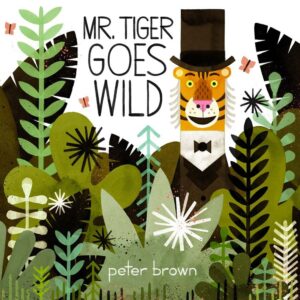 VC: What’s the last picture book that made you LOL?
VC: What’s the last picture book that made you LOL?
JS: I read Mr. Tiger Goes Wild over and over.
RVC: Your picture book philosophy in five words or fewer.
JS: Think like a child!
RVC: Thanks so much, Joyce!
JS: Thank you! These were great questions!!!


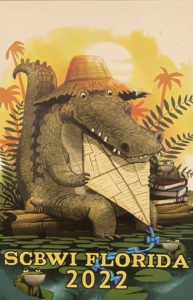 Normally, the third Monday of the month means an Industry Insider Interview, which is me doing a deep dive into the career of a single editor, agent, or other picture book industry person. But since I just got back from the rousing success that was the May 2022
Normally, the third Monday of the month means an Industry Insider Interview, which is me doing a deep dive into the career of a single editor, agent, or other picture book industry person. But since I just got back from the rousing success that was the May 2022 